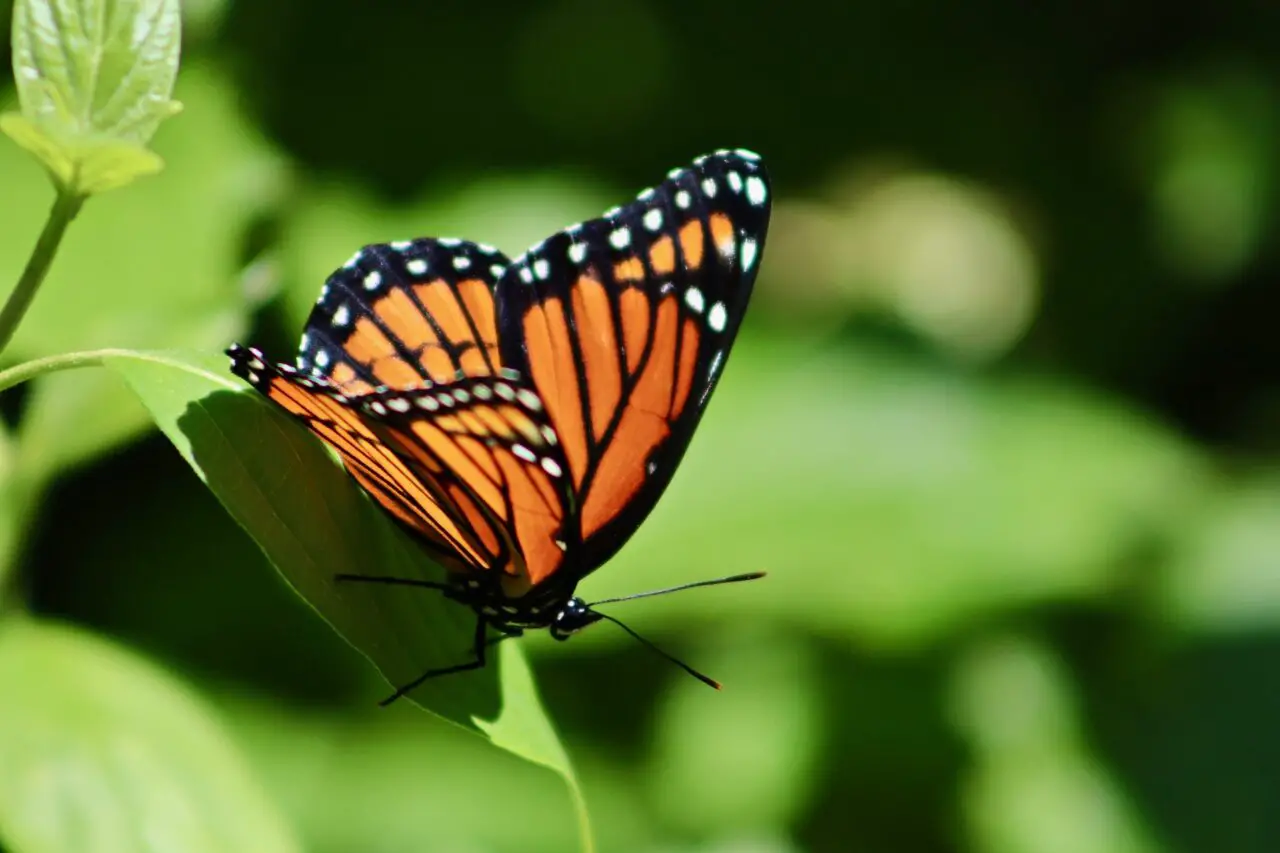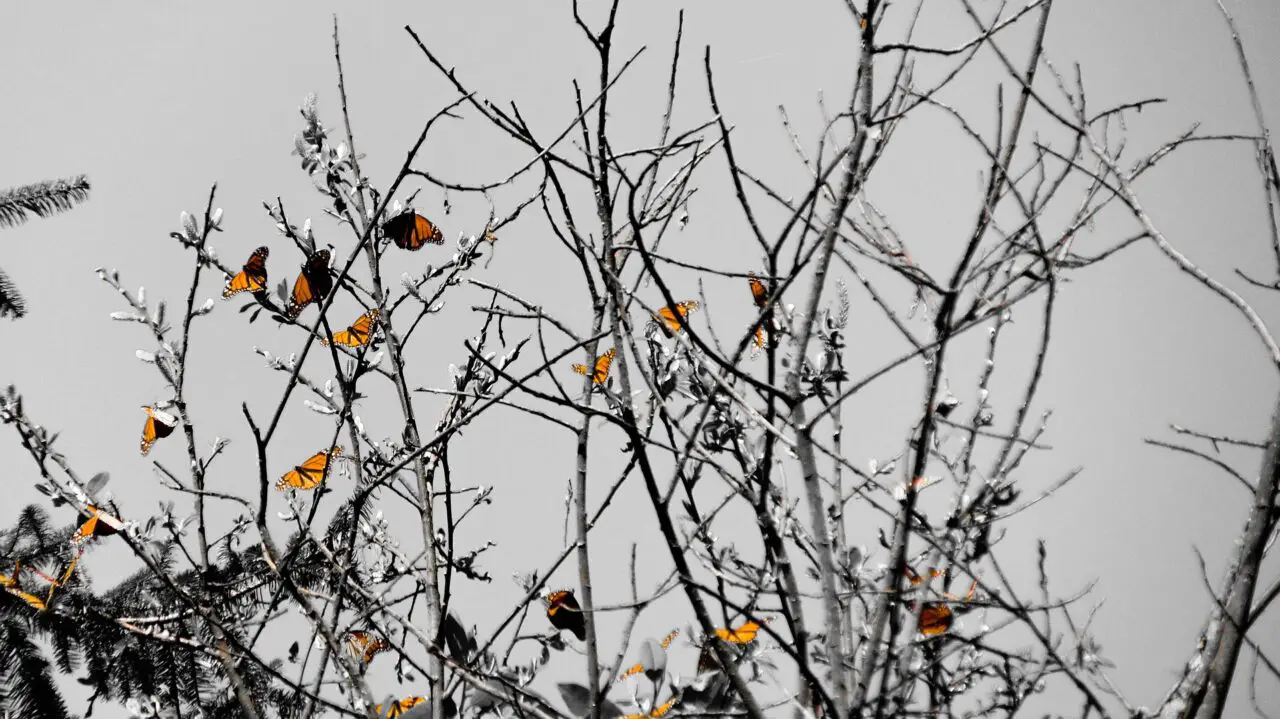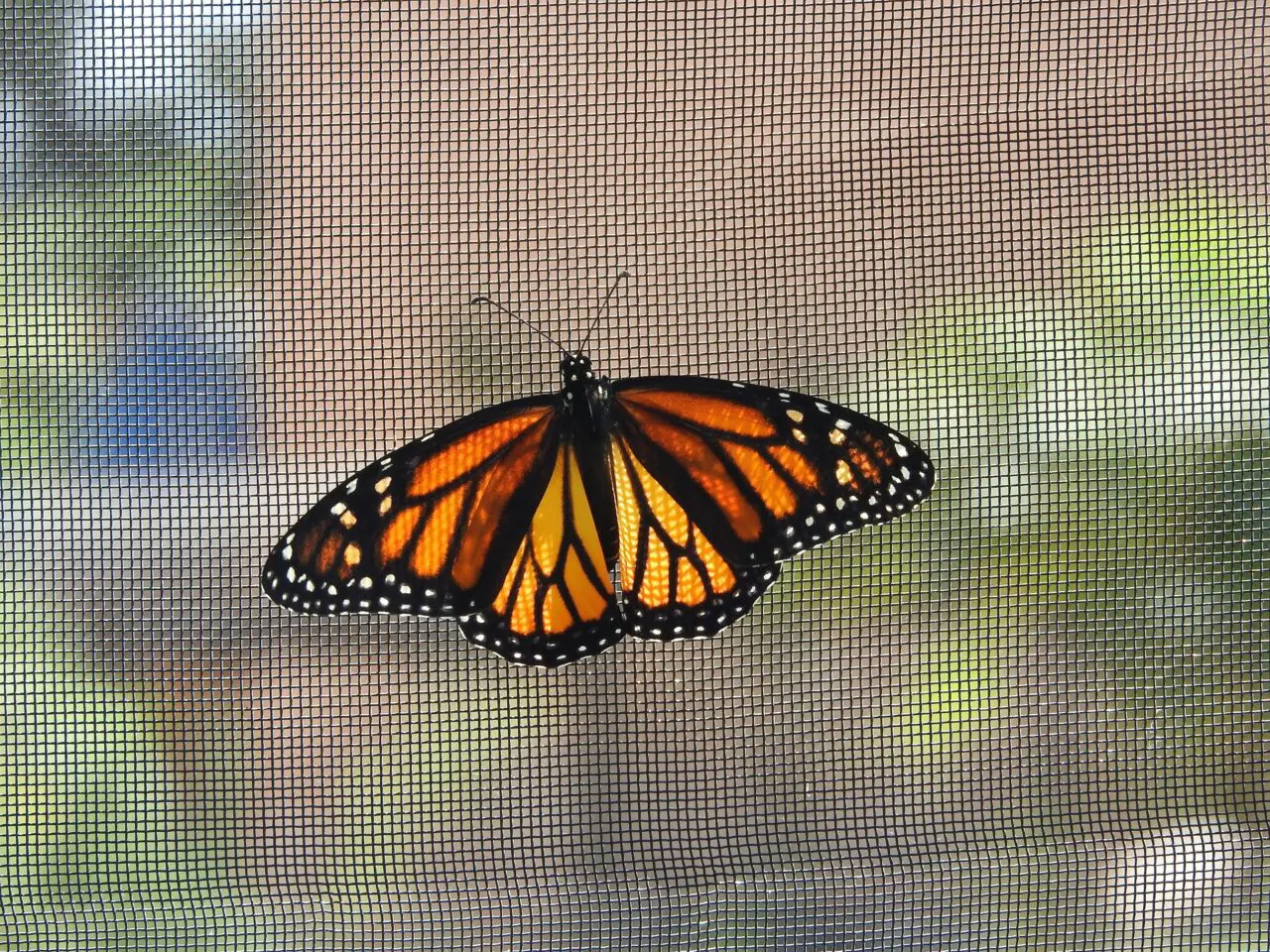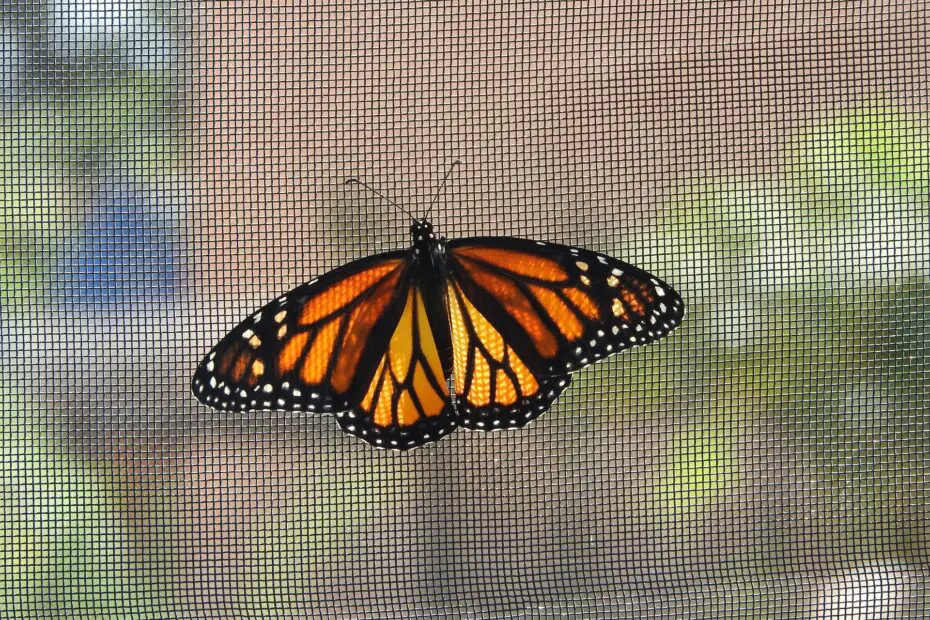The Monarch Butterfly, scientifically known as Danaus plexippus, is one of nature’s most captivating creatures. With its vibrant orange and black wings, the Monarch is widely recognized and admired for its beauty. Beyond its aesthetics, this remarkable insect is renowned for its incredible migration journey and essential role in pollination. In this article, we will delve into the intriguing world of Monarch Butterflies, exploring their life cycle, migration patterns, habitats, conservation efforts, ecological significance, and more.
You may also want to know if frogs have hair.
Life Cycle of the Monarch Butterfly
The life cycle of a Monarch Butterfly consists of four distinct stages: eggs, larvae (caterpillar), chrysalis (pupa), and adult butterfly. The journey begins when a female Monarch lays her eggs on milkweed plants. These tiny, round eggs are pale green or white and can be found on the undersides of milkweed leaves. After a few days, the eggs hatch, giving way to hungry caterpillars.
The larvae of Monarch Butterflies have voracious appetites and exclusively feed on milkweed leaves. As they grow, they shed their skin multiple times, undergoing a series of molting stages. Once the caterpillar reaches its final instar, it forms a chrysalis around its body. Inside the protective shell of the chrysalis, the caterpillar undergoes a miraculous transformation, turning into a fully-formed butterfly. After a couple of weeks, an adult Monarch emerges from the chrysalis, ready to embark on its extraordinary journey.

Migration Patterns of Monarch Butterflies
One of the most awe-inspiring aspects of Monarch Butterflies is their annual migration. Every year, millions of Monarchs undertake an epic journey spanning thousands of miles. They navigate across vast territories, from their breeding grounds in North America to their overwintering sites in Mexico or California.
The migration of Monarch Butterflies is a marvel of nature, filled with mystery and wonder. These delicate creatures embark on this arduous journey to escape the harsh winter conditions and find more favorable environments for survival. They follow specific routes, often referred to as “flyways,” guided by a combination of instinct and environmental cues.
The exact mechanisms behind Monarch migration are still not fully understood, but scientists believe that a combination of factors influences their navigation. These include the position of the sun, magnetic fields, and landmarks along the way. Monarchs also rely on the sense of smell to locate nectar-rich flowers and suitable resting spots during their journey.
The migration routes of Monarchs vary depending on their breeding location. In North America, the Eastern population travels from as far north as Canada and the United States to the mountains of central Mexico, where they cluster together in dense, awe-inspiring colonies. The Western population, on the other hand, migrates to the California coast.
Monarch Butterfly Habitat
Monarch Butterflies require specific habitats to fulfill their lifecycle and sustain their populations. The presence of milkweed plants is crucial as they serve as the sole food source for Monarch caterpillars. Milkweed plants contain toxic substances called cardiac glycosides, which are ingested by caterpillars and provide protection against predators.
Monarchs also rely on nectar-producing flowers for sustenance during their adult stage. These flowers provide them with the energy needed for their remarkable migration and reproductive activities. Native wildflowers such as goldenrod, asters, and coneflowers are popular choices for Monarchs.
However, Monarch Butterfly habitats face numerous threats. The loss of milkweed plants due to agriculture, urbanization, and the use of herbicides has had a significant impact on Monarch populations. Additionally, the destruction and fragmentation of natural habitats further diminish suitable breeding and feeding grounds for these delicate creatures.

Monarch Butterfly Conservation Efforts
Recognizing the importance of preserving Monarch Butterflies, various conservation organizations and initiatives have emerged worldwide. These organizations work tirelessly to protect and restore Monarch habitats, raise awareness about the decline of Monarch populations, and engage in scientific research.
Conservation efforts often involve creating Monarch Waystations and butterfly gardens. These are designated areas where milkweed and nectar-rich flowers are cultivated, providing essential resources for Monarchs at different stages of their lifecycle. Monarch Waystations serve as refueling stations along migration routes, offering food and shelter for weary travelers.
By supporting conservation organizations, individuals can contribute to the preservation of Monarch Butterflies. Planting native flowers, especially milkweed species, in home gardens and participating in citizen science projects that monitor Monarch populations are impactful actions that can make a difference.
Monarch Butterflies and Pollination
Monarch Butterflies play a vital role in pollination, a process essential for the reproduction of many plant species. As they feed on nectar from flowers, Monarchs unintentionally transfer pollen from one flower to another, facilitating cross-pollination. This process enhances genetic diversity and contributes to the overall health and resilience of ecosystems.
The relationship between Monarchs and plants is symbiotic. Monarchs rely on flowers for nectar, while flowers rely on Monarchs for pollination. The decline in Monarch populations can disrupt this delicate balance, potentially impacting the reproductive success of various plant species.
The ecological significance of Monarch Butterflies extends beyond their individual role as pollinators. Their presence in ecosystems supports biodiversity by attracting other insects and birds. They serve as a source of food for predators and contribute to the intricate web of life in their respective habitats.
Threats to Monarch Butterflies
Monarch Butterflies face several threats that have led to a decline in their populations. Loss of milkweed plants, which serve as their primary host and food source, is a significant concern. The conversion of natural habitats to agricultural land and the use of herbicides have resulted in the destruction of vast areas of milkweed.
Climate change and extreme weather events also pose challenges for Monarchs. Changes in temperature and precipitation patterns can disrupt their breeding and migration cycles. Severe storms and droughts can destroy Monarch habitats and disrupt the availability of nectar sources, further straining their survival.
Pesticides, particularly those containing neonicotinoids, have adverse effects on Monarch Butterflies. These chemicals not only kill harmful insects but also impact non-target species like Monarchs. The widespread use of pesticides in agriculture and other settings has contributed to the decline of beneficial insects, including Monarchs.
Habitat destruction is another critical threat to Monarch Butterflies. Urbanization, deforestation, and the expansion of industrial activities encroach upon the natural habitats where Monarchs breed, feed, and rest. The loss of these essential habitats leaves Monarchs more vulnerable to the challenges they face during their migration and reproductive cycles.

How to Support Monarch Butterflies
Individuals can make a difference in the conservation of Monarch Butterflies by taking concrete actions to support their populations. Here are a few ways to contribute:
- Plant native milkweed and nectar-rich flowers: By including milkweed species such as common milkweed (Asclepias syriaca) and butterfly milkweed (Asclepias tuberosa) in your garden or landscape, you provide crucial breeding and feeding grounds for Monarchs. Additionally, planting a diverse range of native flowers like coneflowers, asters, and bee balm ensures a continuous nectar source throughout the season.
- Create butterfly-friendly habitats: Designate areas in your garden or community spaces as butterfly habitats by providing shelter, water sources, and suitable host plants. Avoid the use of pesticides and herbicides, as these can harm Monarchs and other beneficial insects.
- Support conservation organizations: Contribute to organizations dedicated to Monarch Butterfly conservation through donations, volunteering, or participating in their initiatives. These organizations play a vital role in research, habitat restoration, and education.
- Educate and raise awareness: Spread the word about the importance of Monarch Butterflies and the challenges they face. Educate others about their life cycle, habitat requirements, and the role individuals can play in their conservation. Encourage schools, community groups, and local authorities to prioritize Monarch conservation efforts.
- Engage in citizen science: Participate in citizen science projects that monitor Monarch populations and track their migration. These initiatives provide valuable data for researchers and help understand the trends and challenges faced by Monarchs.
By taking these steps, we can collectively contribute to the protection and conservation of Monarch Butterflies, ensuring their survival and the continuation of their incredible journey.
Monarch Butterfly Symbolism and Cultural Significance
Throughout history, Monarch Butterflies have held symbolic and cultural significance in various societies around the world. In many cultures, they are seen as symbols of transformation, rebirth, and beauty. The remarkable metamorphosis from caterpillar to butterfly has been interpreted as a metaphor for personal growth and spiritual transformation.
In indigenous cultures of North America, Monarch Butterflies are considered sacred and are associated with ancestral spirits. They are believed to carry messages from the spirit world and represent the souls of departed loved ones. The arrival of Monarchs during their migration is often seen as a spiritual event, evoking feelings of awe and connection with the natural world.
In Mexican culture, the Monarch Butterfly holds a special place. Each year, millions of Monarchs arrive in Mexico’s oyamel fir forests, coinciding with the Day of the Dead celebrations. This annual phenomenon is seen as the return of the souls of deceased ancestors. The vibrant orange and black colors of the Monarchs are believed to represent the flames of the ancestral spirits.
The cultural significance of Monarch Butterflies has also fueled conservation efforts. People who recognize their symbolic value are inspired to protect these magnificent creatures and their habitats. The celebration of Monarchs in art, literature, and festivals further raises awareness and promotes their conservation.
Monarch Butterflies and Ecotourism
The enchanting beauty and extraordinary migration of Monarch Butterflies have made them a popular attraction for ecotourism. Many regions across North America and Mexico offer opportunities for visitors to witness the stunning spectacle of Monarchs in their natural habitats.
Monarch Butterfly sanctuaries, such as the El Rosario Sanctuary in Mexico or the Pacific Grove Butterfly Sanctuary in California, draw visitors from around the world. These sanctuaries provide a safe haven for Monarchs during their overwintering period and offer guided tours and educational programs for visitors.
The growth of ecotourism focused on Monarch Butterflies has positive impacts on local economies. It creates employment opportunities and generates revenue for communities residing near these sanctuaries. However, it is crucial to ensure that ecotourism practices are sustainable and do not harm the very habitats and species they aim to protect.
Efforts are made to implement responsible ecotourism practices, including visitor education, limits on the number of visitors, and strict regulations to minimize disturbances to the Monarchs and their habitats. Sustainable ecotourism not only supports conservation but also fosters a deeper appreciation for the natural world and the need to protect it.
Monarch Butterfly Facts and Trivia
Here are some fascinating facts and trivia about Monarch Butterflies:
- Monarchs are known for their incredible navigational abilities. They can use the position of the sun, magnetic fields, and landmarks to find their way during migration.
- The Monarch migration is one of the longest known insect migrations, with some individuals traveling up to 3,000 miles.
- Monarchs undertake multiple generations during their migration. The offspring of butterflies that reach the overwintering sites continue the journey, while subsequent generations return to their breeding grounds.
- Monarchs have a unique defense mechanism. The caterpillars and adult butterflies contain toxins from the milkweed plants they consume, making them unpalatable to many predators.
- Monarchs are among the few insects capable of overwintering. They cluster together in trees or shrubs, conserving energy and staying protected from the cold.
- The wingspan of a Monarch Butterfly can reach up to 4 inches (10 cm), making them one of the larger butterfly species.
- Monarchs undergo complete metamorphosis, transforming from eggs to caterpillars, then to chrysalis, and finally emerging as adult butterflies.
- Monarchs engage in a behavior known as “hilltopping,” where males gather on hilltops and other high points to attract females for mating.
- Monarchs exhibit a phenomenon called “butterfly-boarding” where multiple butterflies roost together on a single branch or plant, creating a visually stunning sight.
- Monarchs have been designated as the official butterfly of several U.S. states, including Texas, Illinois, and Minnesota, showcasing their cultural significance.
These captivating facts about Monarch Butterflies highlight their remarkable nature and add to the intrigue and admiration surrounding them.
Conclusion
The Monarch Butterfly, with its captivating beauty and extraordinary migration, holds a special place in the natural world and human culture. Understanding and appreciating the life cycle, migration patterns, habitats, and conservation efforts surrounding Monarch Butterflies is crucial for their continued survival.
The Monarch’s journey from egg to butterfly, its incredible navigational abilities, and the challenges it faces along the way exemplify the resilience and adaptability of nature. However, Monarch Butterflies now face numerous threats, including habitat loss, climate change, pesticides, and the decline of milkweed plants.
Conservation efforts, such as creating Monarch Waystations, supporting conservation organizations, and practicing sustainable gardening, play a vital role in protecting Monarch Butterflies and their habitats. By taking individual and collective action, we can contribute to the preservation of these magnificent creatures for future generations.
Monarch Butterflies also hold deep cultural and symbolic significance, representing transformation, beauty, and ancestral spirits in various cultures. Their presence has inspired art, literature, and celebrations, further highlighting the need to conserve and cherish their existence.
The popularity of Monarch Butterflies has led to the development of ecotourism focused on these majestic insects. Responsible ecotourism provides economic opportunities for local communities while raising awareness and fostering a deeper connection with nature.
As we celebrate the wonders of the Monarch Butterfly, let us continue to educate ourselves and others about their importance and the actions we can take to protect them. By preserving their habitats, planting native flowers, supporting conservation organizations, and practicing sustainable tourism, we can ensure the survival and thriving future of the Monarch Butterfly.
Frequently Asked Questions (FAQs)
- Q: How long do Monarch Butterflies live?
- A: The lifespan of a Monarch Butterfly varies depending on the time of year. During the breeding season, adult Monarchs typically live for 2 to 6 weeks. However, the generation that migrates can live for several months.
- Q: What is the reason behind the decline of Monarch Butterflies?
- A: The decline of Monarch Butterflies can be attributed to multiple factors, including loss of milkweed plants, habitat destruction, climate change, pesticides, and extreme weather events.
- Q: How can I create a butterfly-friendly garden?
- A: To create a butterfly-friendly garden, plant native milkweed species and nectar-rich flowers. Avoid using pesticides and herbicides, provide shelter, and include water sources. Creating a diverse and welcoming habitat will attract Monarchs and other butterfly species.
- Q: What is the purpose of Monarch Waystations?
- A: Monarch Waystations are designated areas that provide essential resources for Monarchs, including milkweed plants and nectar-rich flowers. These waystations serve as resting and refueling spots during migration, contributing to the survival of Monarch populations.
- Q: How can I get involved in Monarch conservation efforts?
- A: You can get involved in Monarch conservation by supporting conservation organizations, participating in citizen science projects, volunteering at Monarch sanctuaries, and spreading awareness about the importance of protecting Monarch Butterflies and their habitats.
Remember, the conservation of Monarch Butterflies is a collective responsibility. By working together, we can ensure the preservation of these magnificent creatures and continue to marvel at their beauty and wonder for generations to come.
